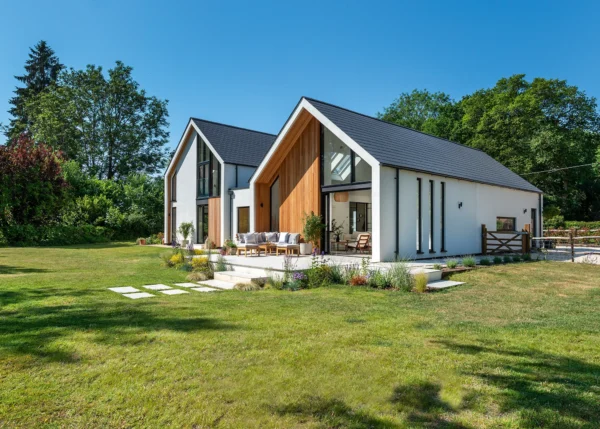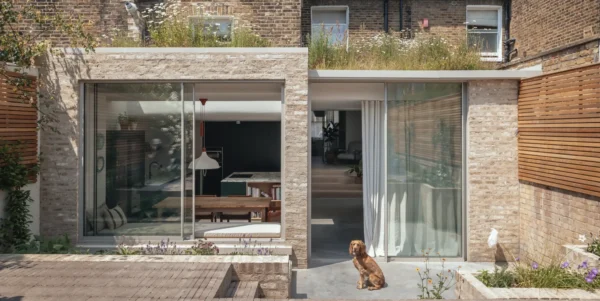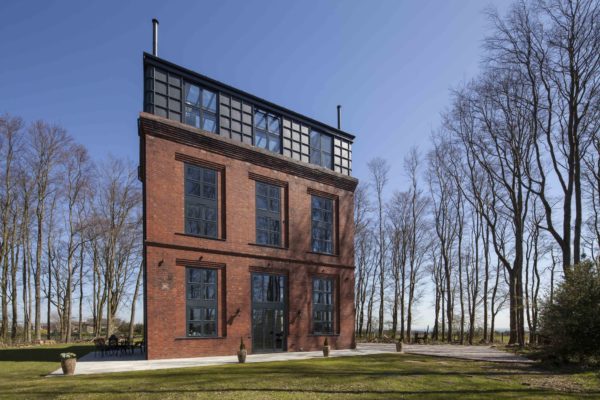How to Reduce Plastic In Your Project
Plastic is everywhere – both as products and as waste. Escaped plastics are a blight on our roadsides, in our watercourses, fields and oceans. Microplastics have even invaded our water supplies and are present at the North Pole. This genie, it seems, it well and truly out of the bottle (as well as in it!).
Brave attempts are being made to expand the market for recycling, improve the technology to recycle more types, and collect waste from our beaches and oceans. But I believe what we really need to do is stop producing the stuff in the first place. Pollution from plastic will only stop if it’s banned or if people stop demanding it.
Learn more: 13 Sustainable Eco Houses to Inspire Your Project
That’s where we self builders come in; not only can we reduce plastic use in our own projects, we can also set an example to the rest of the construction industry and prove that it’s not so difficult to do. The fundamental point, of course, is that until the early/mid 20th century, no buildings contained plastics, because they hadn’t been invented. On that basis, it is perfectly possible to be dry, safe, healthy and warm in our homes without any plastics at all.
Why is plastic harmful?
There are health concerns relating to plastics, including offgassing from certain products. Robust evidence on the effects of the many chemicals used in the production of plastics is hard to come by, but stabilisers and additives are used in PVC, and some of these additives are no longer used due to their toxicity.
However, these substances are already in countless buildings. When plastics are set alight, they are at their most dangerous – PVC emits hydrogen chloride when burned, and this can be lethal.
Another key reason for bothering with reducing use is that plastics are made from oil. This is a non-renewable (ie finite) and rapidly depleting resource. So, there will come a point when we have to break our addiction to plastic in any case. The other downside of plastic is that it is energy intensive in its production, so the embodied impact of plastic is much greater than renewable and natural alternatives, which are available for most applications.
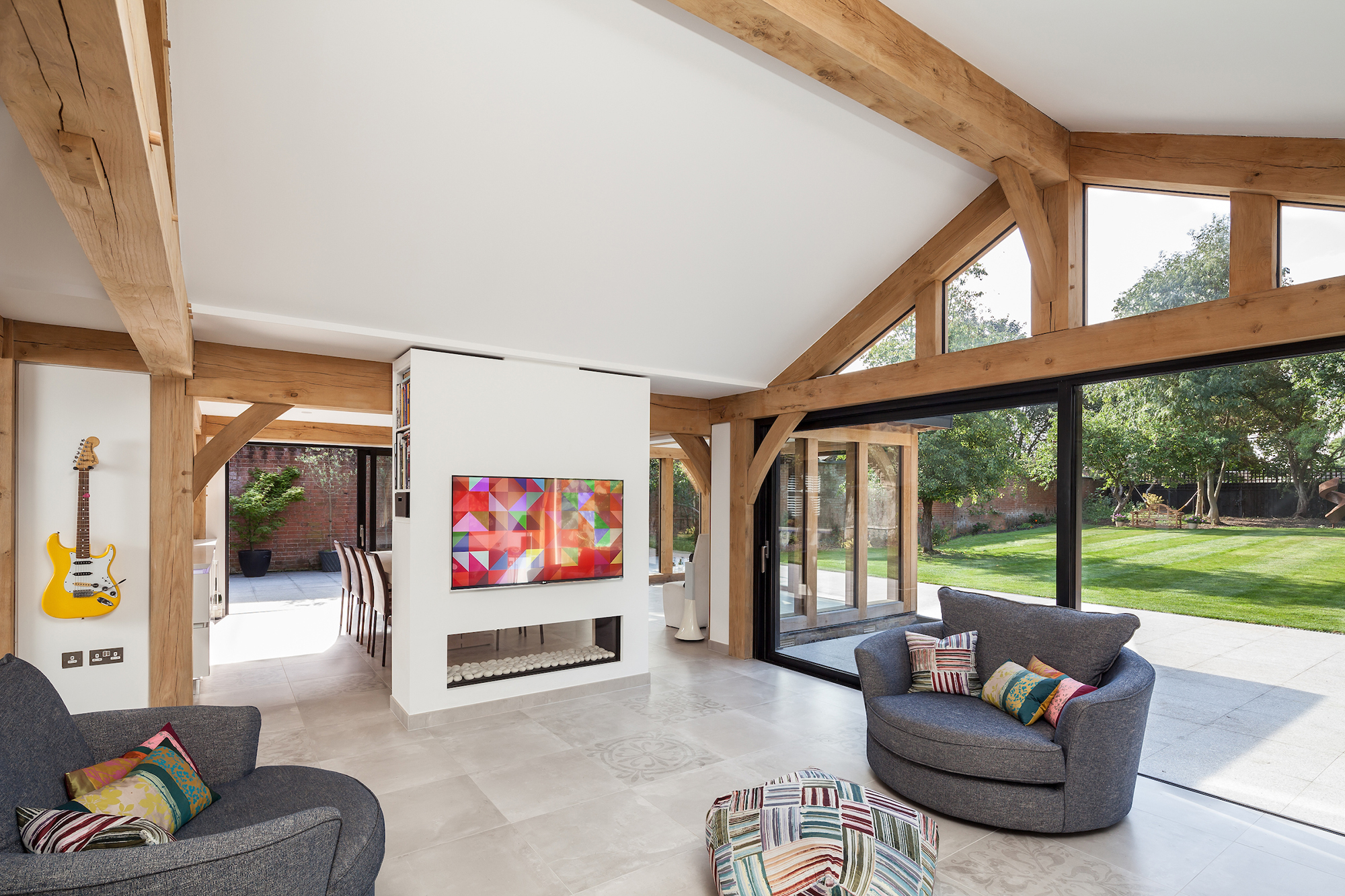
Aluminium window and door frames are high performance and offer the contemporary look that’s popular in open-plan spaces that connect with the garden. These bifolds are from Kloeber
Plastic is in so many elements of our homes. Of course, we’ve all become accustomed to living with artificial lights, TVs, phones and a variety of other electrical goods, so there is an inevitable demand for plastic to serve in the supply and distribution of electricity within homes. There is also almost inevitably plastic in waste plumbing. But in terms of alternatives, we’ll start with the big ticket items.
Plastic waste in windows and doors
By far the largest use of plastics in 20th century buildings was in windows. This has been both detrimental to the environment and a tragedy for heritage, as perfectly functional glazing frames built from slow-grown pitch pine were ripped out and replaced. In many cases these had only rotted on the bottom sill, if at all, and that only occurred as a result of long-term neglect.
The replacement windows have not lasted, and many have been replaced a second time within 30 years, as double-glazed panels have misted up, frames have become degraded by UV light, and breakages occur which are difficult or impossible to repair.
The embodied impact of two replacements far exceeds the energy saved in terms of reductions in heat losses. And of course, the original windows with their correct proportions, rolled
glass and fine detailing, have all been lost. Secondary glazing, repair and draught-proofing would have done 75% of the thermal job at 25% of the impact.
Am I allowed to mention beauty? In my opinion, timber and metal windows are generally (although not always) better looking than plastic counterparts. Of course, beauty is in the eye of the beholder – but once you start to break it down and analyse it, there are rules of proportion and design which are often contravened by PVCu designers.
There is no good reason why double-glazing was equated with plastic windows, as it is perfectly possible to build excellent quality, durable timber framed windows which can be double or even triple-glazed. The same goes for metal or modified wood.
Learn more: Guide to Timber Windows
The technology for paint and other coatings has improved markedly in recent years, although original timber windows, if well maintained, can last indefinitely – even using the paint that was around throughout the 20th century.
Timber or metal can be used in sliding, casement or sash windows, all built to modern thermal specifications, long-lasting, repairable and sustainable (ensure FSC certification or equivalent).
They do cost more than plastic windows but, if you’re a self builder, look at the additional price as a percentage of the overall budget. When you consider what this will add to the appearance and value of the building, then it becomes a no-brainer. Windows are the eyes of a building and it’s so important to get this right.
Plastic insulation
The mainstream construction industry seems wedded to plastic insulation, mainly polyisocyanurates – rigid board insulation used in wall (and floor) construction.
There are plenty of alternatives, especially for walls, where moisture ingress should not be a risk. As plastic insulation products are thermally very effective, the penalty is the wall will need to be slightly thicker in order to get to the same U-value using an alternative product with lower resistivity.
Learn more: Choosing Natural Insulation
This might be mineral wool (already commonly used) or a more natural and/or renewable material, such as wood wool or hemp. I’ve built to U-values well below Building Regulations by using a recycled newspaper insulation product, and that development won an award for lowest energy street in the country.
The Natural Fibre Insulation Group at the Alliance for Sustainable Building Products (ASBP) seeks to raise awareness of natural fibre insulation products and systems through technical briefing papers, training and events.
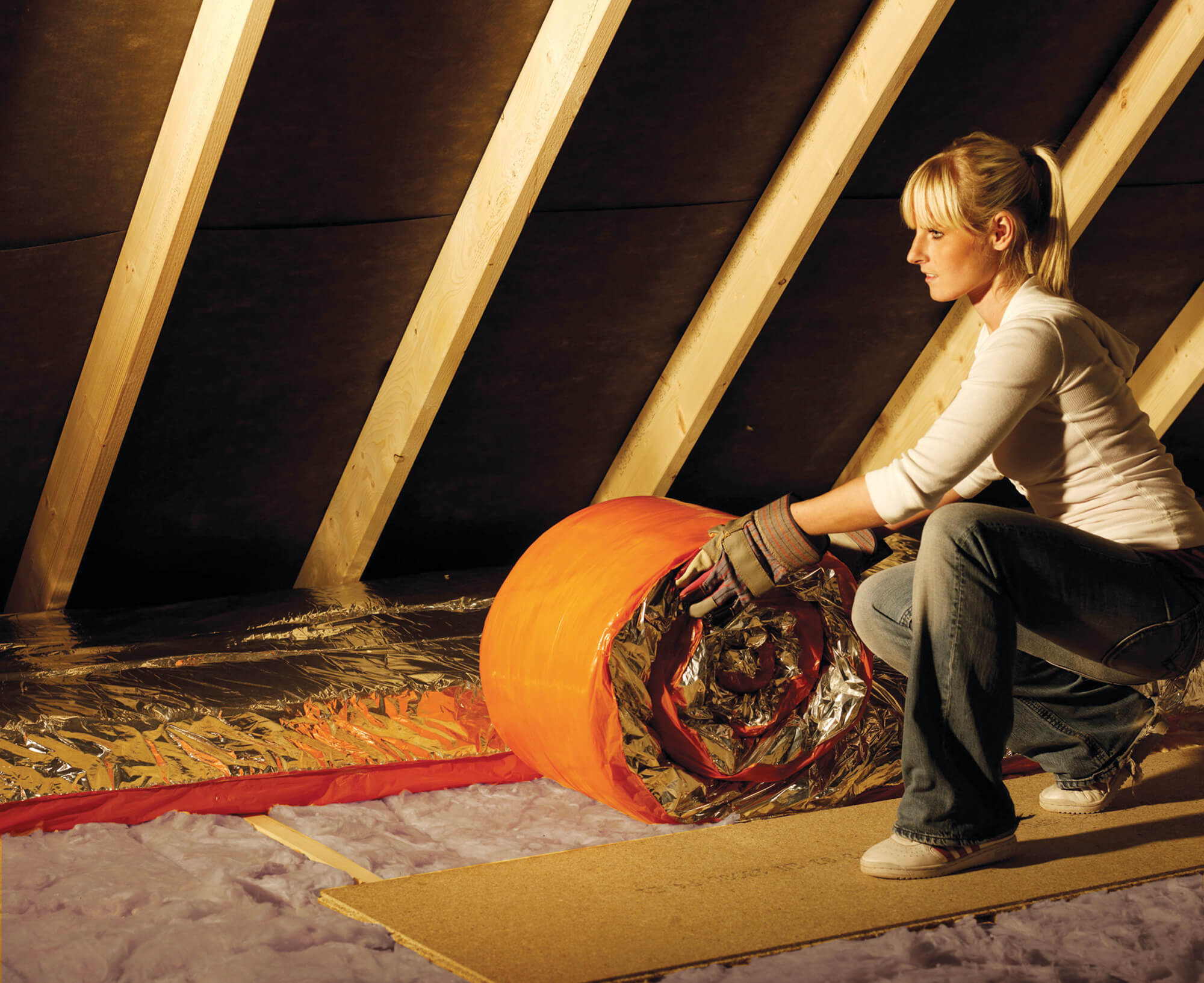
CosyWool British sheep’s wool insulation from Thermafleece is natural and produced in the UK
Floors are more challenging, though polystyrene is often used as it tolerates damp well – and has the important advantage of being recyclable, unlike most building plastics. Self builders sometimes turn to insulated hemp (hempcrete) or cork-based products as a way of eliminating the plastic in solid ground floor slab construction.
Alternatives to plastic rainwater goods
There are plenty of alternatives to plastic rainwater goods (gutters and downpipes) and good reasons for using them. Metal guttering lasts much longer than PVC as it does not suffer the same tendency to become brittle with age. When I was a builder, you’d be leaning a ladder against a gutter to do one job, to then frequently find yourself doing another – fixing the gutters as they shattered.
My personal favourite is galvanised steel – again, a bit more expensive than plastic, but as a proportion of the overall budget it’s nothing. As gutters and downpipes are such a strong visual feature of a building, galvanised steel is well worth considering for its aesthetic appeal (it can be coated different colours) as well as its longevity. As the Victorians would say, if you can’t hide it, make a feature out of it! Seamless aluminium is available and other products, like copper, though these do start to push up the price.
Services
This is probably the most challenging area to reduce plastic. PVC in cabling can be replaced by LSF or LSHF cable, which is made from halogen-free compounds. This makes it less toxic when burned (which is an important consideration especially in places where there are a lot of people) but it’s still a plastic and less flexible than PVC.
Plastic packaging in constructionThe question of plastic packaging is a different debate to the one regarding plastic building products because we want products to last, whereas we don’t want what it arrives in to last longer than is needed to do the job. It really is a form of madness to put food products lasting a week in containers that don’t break down within 500 years. While compostable plastics are starting to be used in the food industry, they are not yet widely seen in the construction sector, so it’s up to all of us to write this into build specifications, or at least to ask the question of merchants and feed it back up the chain to suppliers. There are plenty of alternatives (and remember that for centuries we built without any plastic packaging at all). If you control your own supply chain, select products thoughtfully, use locally sourced materials wherever possible and plan carefully for storage on site, you can probably eliminate most of the plastic packaging for your materials. We also have national commitments to increase producer responsibility for packaging, to ensure that ultimately they pay the full net costs of managing waste. To stimulate demand for recycled plastic packaging, a tax on plastic packaging with less than 30% recycled plastic content will be introduced from April 2022 and will be set at £200 per tonne. |
For pipework, the most effective specification change a self builder can make is to use copper pipe rather than plastic for all the water and heat distribution. Of course copper is still a finite resource but it is almost always recycled now. In waste plumbing, plastic replaced clay, lead and steel many years ago and there are few easily available alternatives.
Finishes
It’s easy to forget about the finishes when thinking about a home building project, but these can end up being a significant part of the budget and of course have a huge impact on the tone of the result.
Plastic is present in many modern carpets – if not in the top layer it often forms part of the carpet base (this is common for wool), or the underlay. Natural rubber/latex underlay is readily available, and carpets of jute, sisal and coir will give your home a lovely natural feel while avoiding nylon and other synthetic products. For hard flooring, try natural linoleum rather than standard lino (that’s how the vinyl substitute got its name) or cork, plus of course all genuinely sustainable timber flooring products.
Preventing plastic in the garden
Should I mention artificial turf? Try grass or plant a wildflower meadow! Plastic fencing and mesh products, even if they’re made from recycled materials, will still reenter the waste stream, and there is no guarantee that they will again be fully recycled. Plastic membranes are used as weed suppressants – but the woven ones are not always effective, then they shed thin strips of plastic, which end up polluting the garden. Old carpet works better in my experience.
Main image: This herringbone patterned floor is made from bamboo. The Oxwich collection from Woodpecker Flooring uses responsibly sourced wood and offers a smooth finish
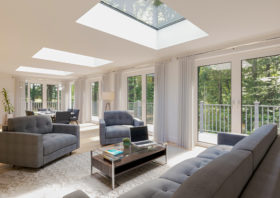


















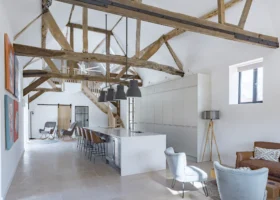















































































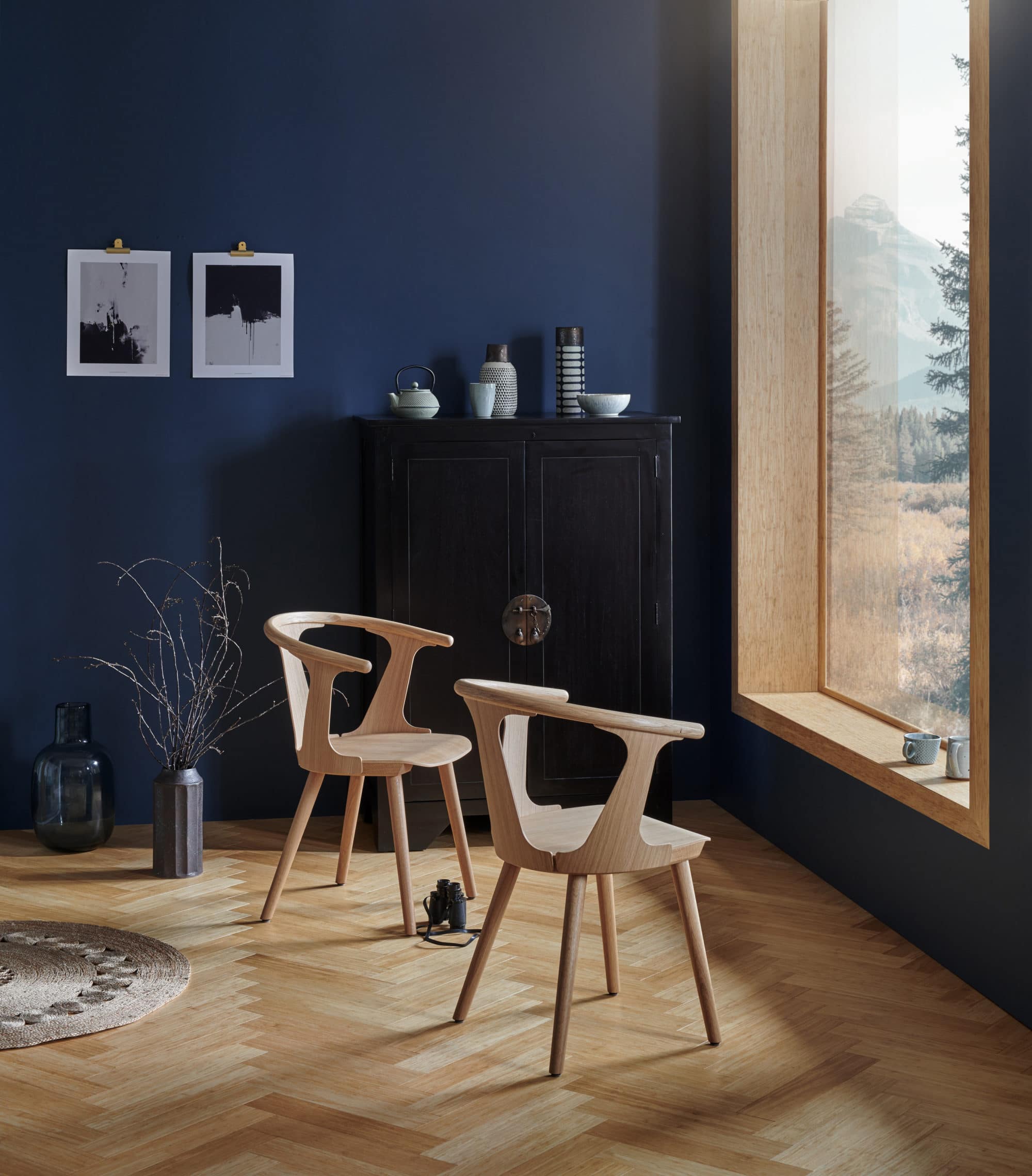
 Login/register to save Article for later
Login/register to save Article for later


